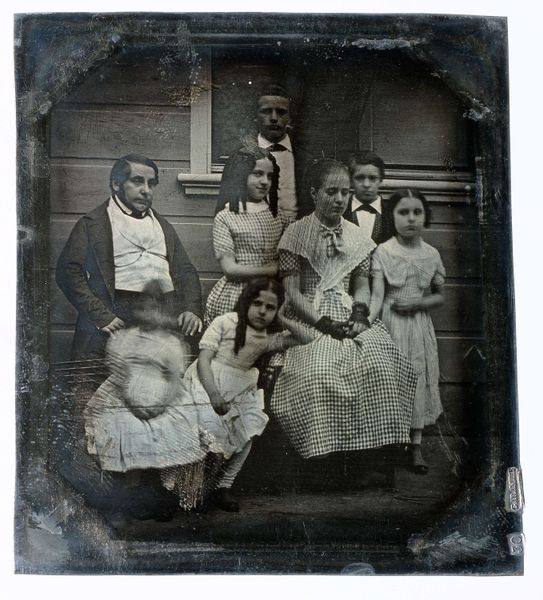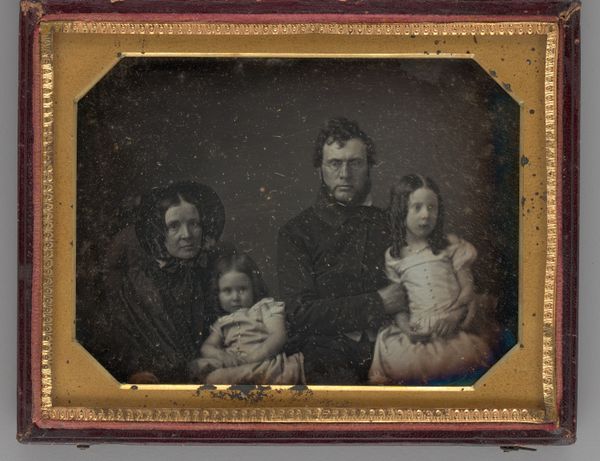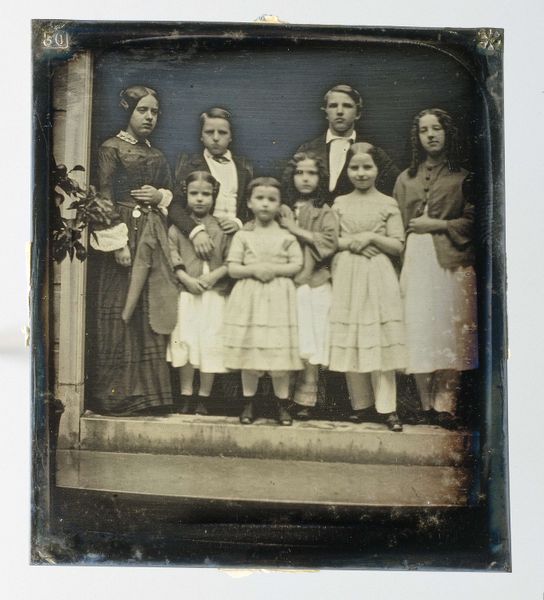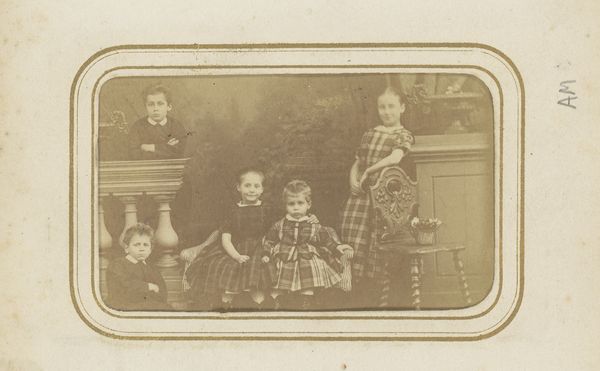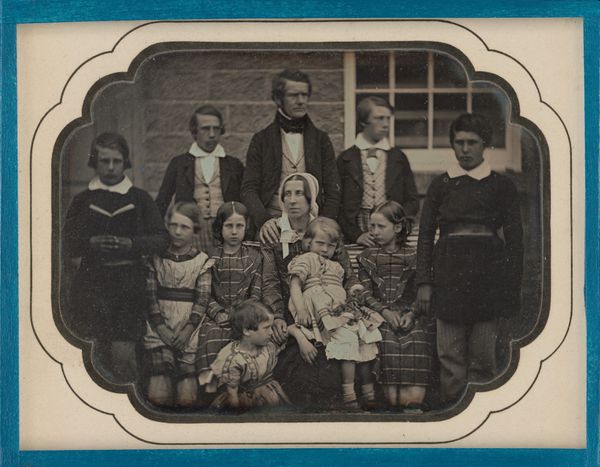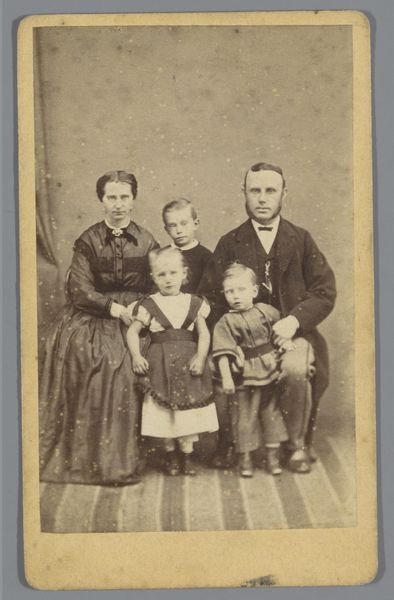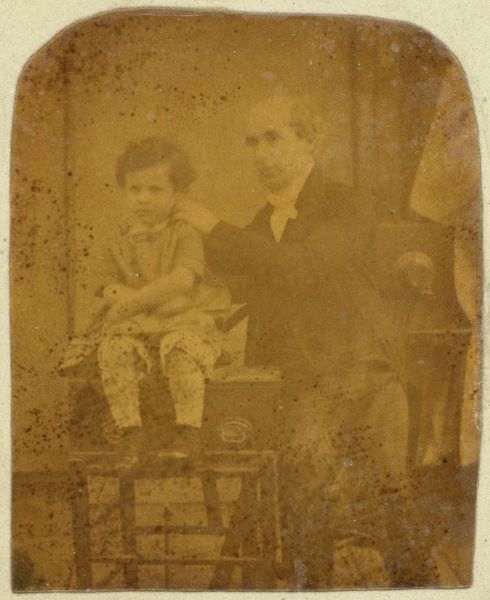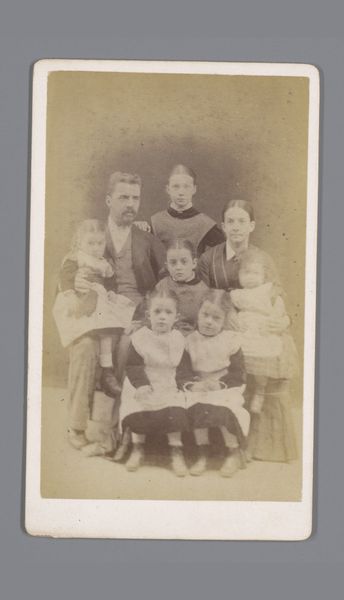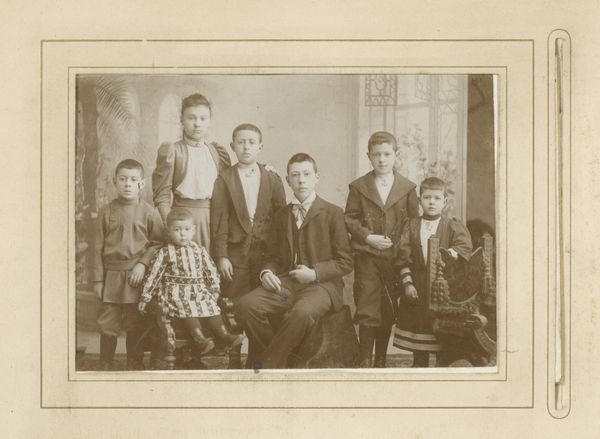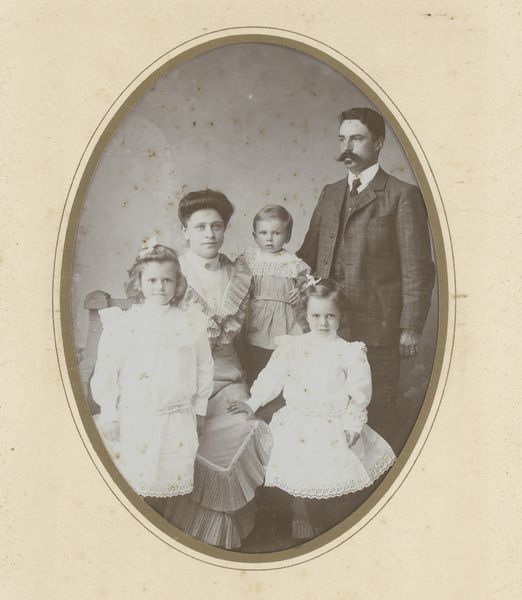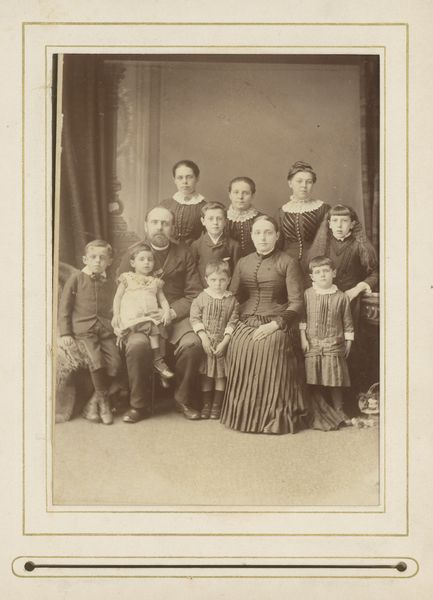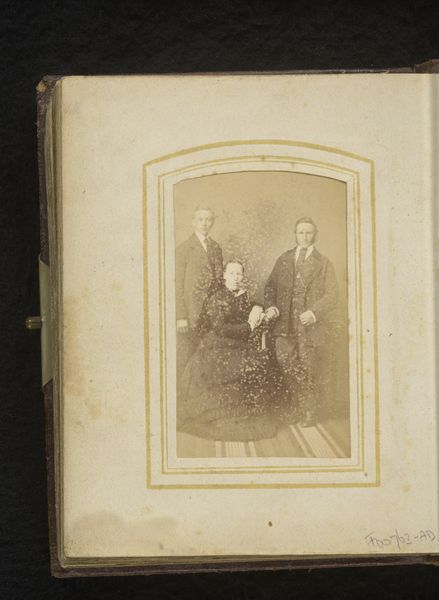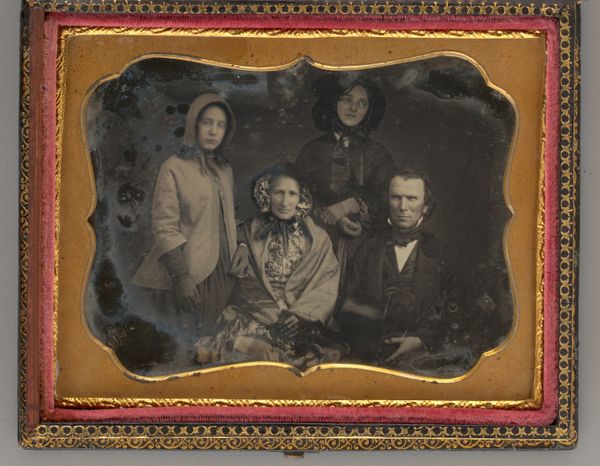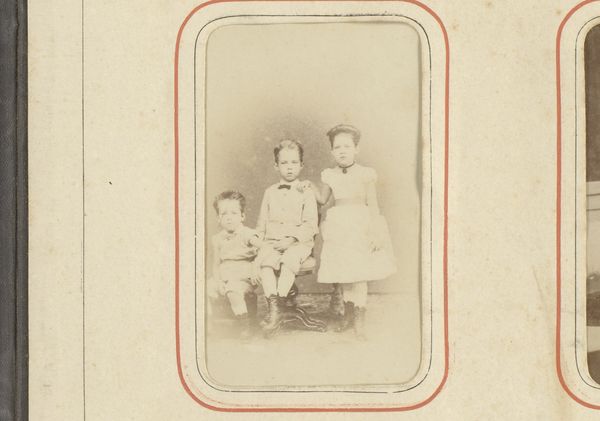
Groepsportret van leden van de familie Asser en Oppenheim c. 1846
0:00
0:00
photography, gelatin-silver-print
#
portrait
#
water colours
#
photography
#
coloured pencil
#
group-portraits
#
gelatin-silver-print
#
genre-painting
#
mixed media
#
realism
Dimensions: height 81 mm, width 71 mm, height 129 mm, width 108 mm
Copyright: Rijks Museum: Open Domain
Editor: So, this is "Groepsportret van leden van de familie Asser en Oppenheim," a photograph from around 1846, held here at the Rijksmuseum. It’s quite faded, almost ghostly, but you can still make out the family posing stiffly. What strikes me is the formality and how this presentation signals something about the power or influence this family might have held at the time. What do you see in this piece? Curator: Well, it’s tempting to consider this gelatin silver print as simply a record of a moment in time, right? A straightforward depiction of the Asser and Oppenheim families. But as historians, we should also be considering the historical context of early photography and how it quickly became linked to social status and self-representation. Group portraits, like this, were increasingly accessible but still carried a certain weight, wouldn’t you agree? How do you think a photograph like this contributed to the family’s image or the image they wished to project to the outside world? Editor: I hadn't really considered it that way! It feels like it would have been so much more staged and deliberate than today's casual snapshots. It definitely adds to the reading of a self-conscious presentation of an idealized familial unit. Curator: Precisely. Early photographic processes were time-consuming and required specific settings. That’s reflected here. Consider the backdrop: the almost oppressive flatness and simplicity of a building. What do you make of it? What does it convey in contrast with a more organic setting? And also, how might we link its presence with the economic standing of those featured? Editor: Interesting point. I guess it hints at stability and a permanent grounding, maybe an element of reservedness as well? Curator: Exactly! Also think about the accessibility of photography at that time. These images weren't passively received. These people likely knew of the photographic process, they understood its implications. Each portrait participates in crafting a very particular narrative. What the photographer, likely Asser himself given he came from this family and was something of an inventor, has created is not only an artwork but evidence of societal standing, influence, and, dare I say, the performance of a family's cohesive front. Editor: That makes a lot of sense! I had only thought of it as a historical document, not something deliberately constructing an image of power. It's amazing to realize just how actively images like this play into public perception and lasting legacies. Curator: Indeed. This work makes us question the layers and purpose behind seemingly simple family pictures, even today.
Comments
No comments
Be the first to comment and join the conversation on the ultimate creative platform.
